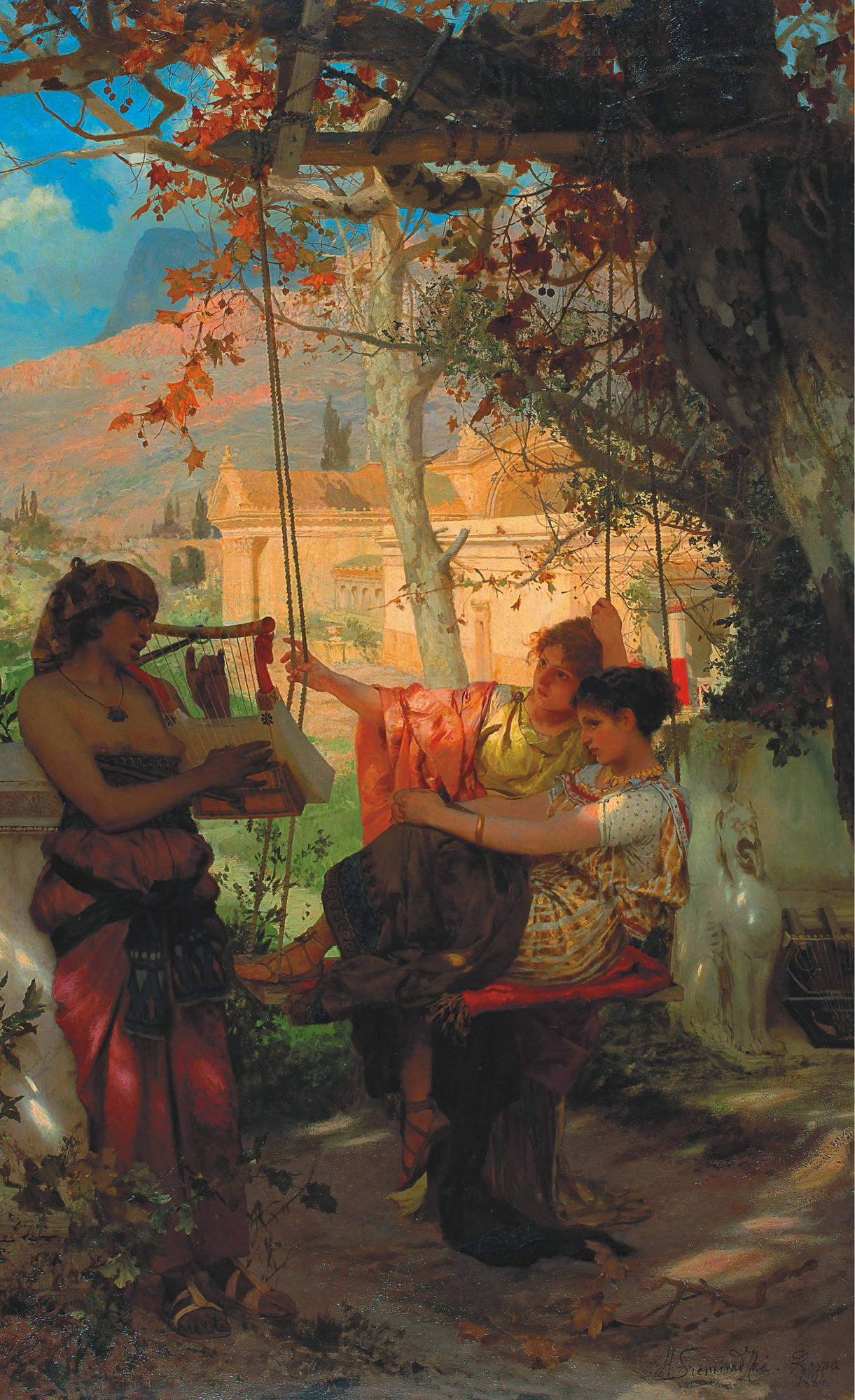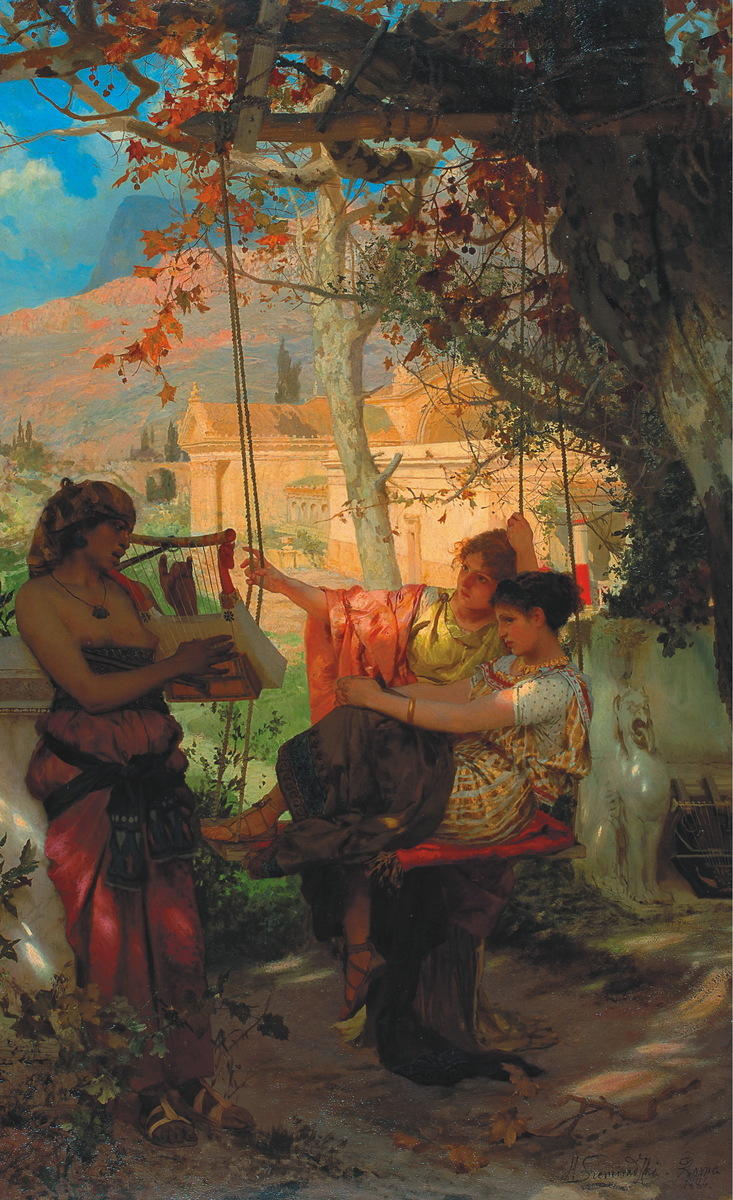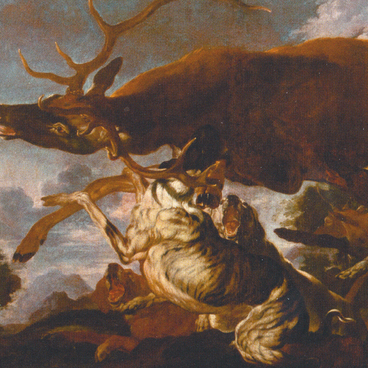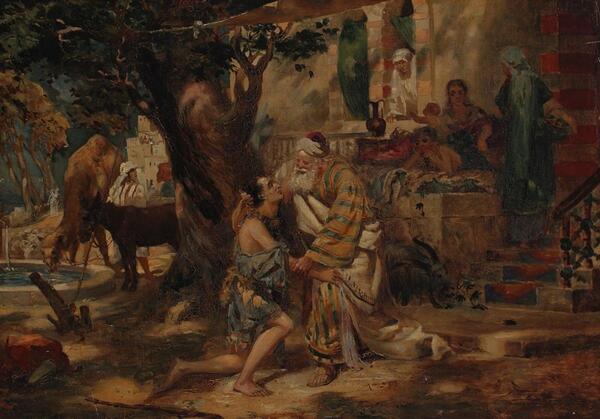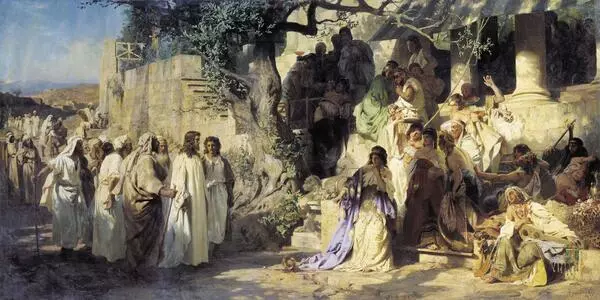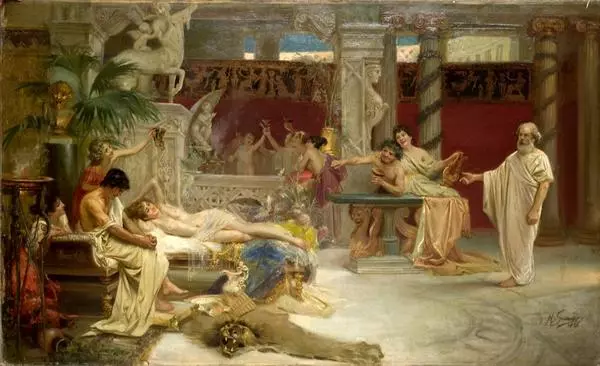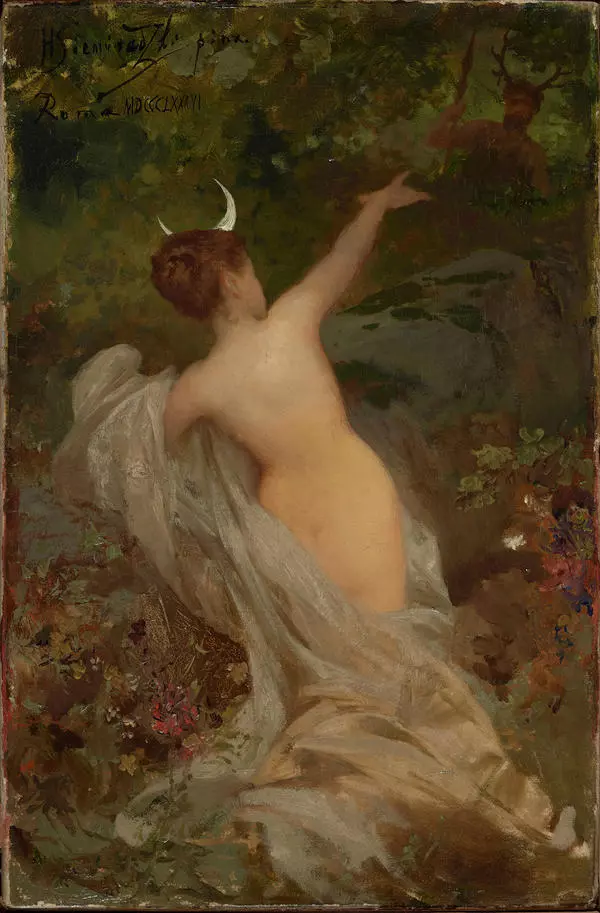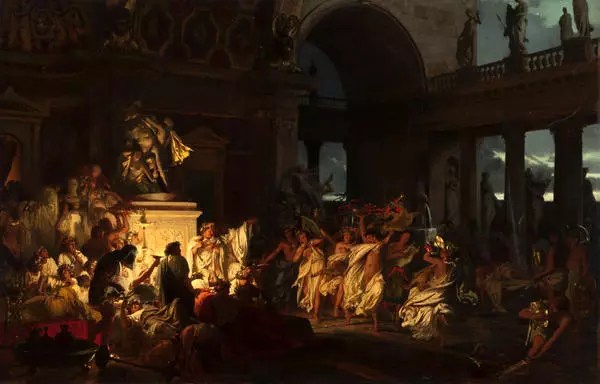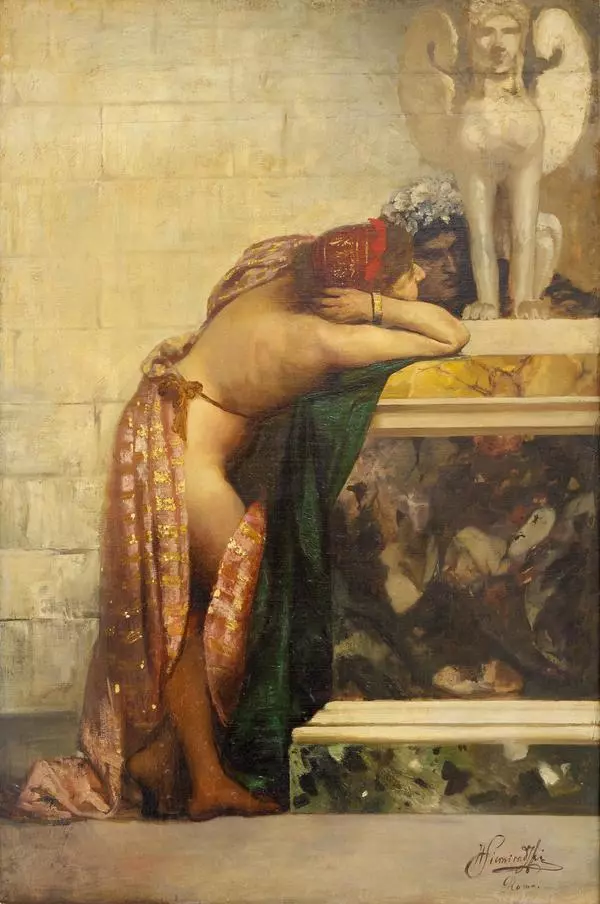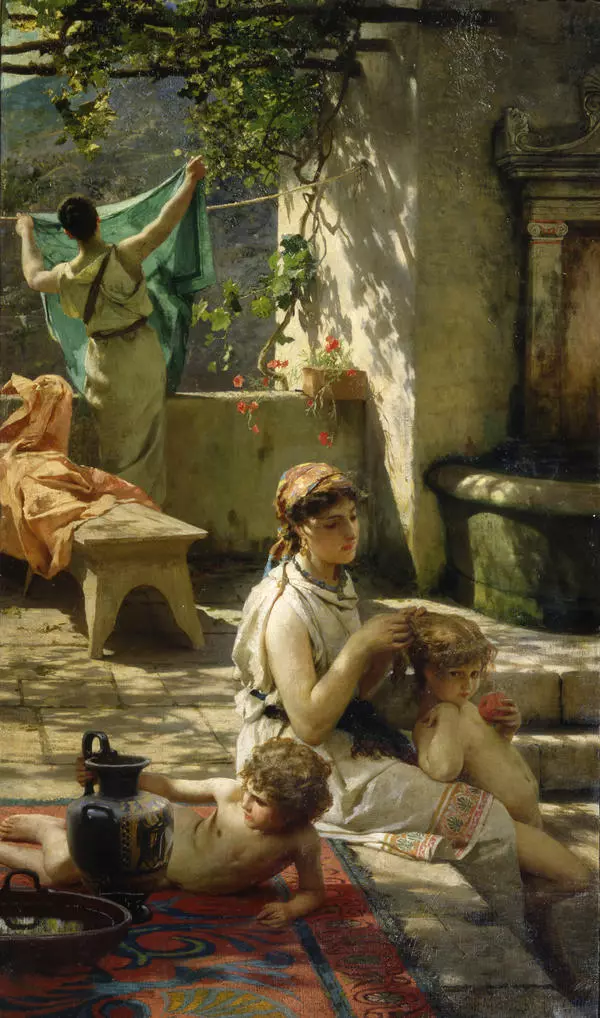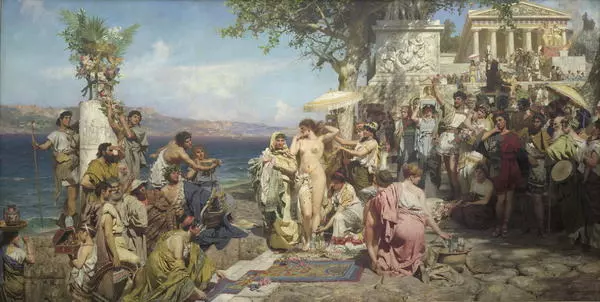Henri Semiradsky, a painter and nobleman of Polish and Russian origin, lived in Italy in the 1870s. His paintings during that period that were not heroic, but contemplative. Gradually, his topic preferences shifted to antiquity interpretation. Dance among swords refers to initial work of the cycle (1881) and Phryne at the Festival of Poseidon in Eleusis to the final one (1889).
The master completed Song of a Slave Girl in 1884; it was a camera art painting quite usual for salons. The painting combines some academic practices and unconventional approaches. On the one hand, the viewer sees three grounds: the foreground shows some sharply defined shapes of people in the shadow, then the blurry architectural silhouettes follow, and in the background, there is an abstract landscape under the bright sun. On the other hand, the remote lighting adds depth to the composition and enhances the intensity of colors. On the third hand, contrast between twilight and light tells of coolness and tranquility of a hot day.
As we can guess from the title, the lead character is a slave with an exotic appearance. A half-naked girl sings and plays the harp, which relates to the Middle East culture. Her head is covered, the garment with primitive ornament also hints at a certain ethnicity.
The listeners appear in more sophisticated outfits and shoes. Fabrics have complex embroidery or golden stripes. Women’s hair is styled in popular hairstyles. Their poses tell of relaxation, and their faces show attention to a piece of music.
The artist shows an imaginary scene without any drama. However, the painting can hardly be referable to imagining of the charm of everyday life in ancient times. For example, many Romans really owned the swing. They used that garden piece of furniture for weddings and everyday rest, and it symbolized the prosperous condition of the owners.
It is worth saying that domestic intellectuals recognized the lack of realism and instructiveness in the work of Semiradsky Henri as a problem in those years.
However, bohemian circles in Europe praised the author. Henryk Sienkiewicz, a Polish writer, once said of his contemporary: “No one conveys the element of sunlight like Semiradsky. <…> Only those who looked at the environs of Rome with their own eyes <…> will be able to understand how much truth and soul is in this landscape, <…> in this harmony of pink and blue colors, in this transparent distance”.
The master completed Song of a Slave Girl in 1884; it was a camera art painting quite usual for salons. The painting combines some academic practices and unconventional approaches. On the one hand, the viewer sees three grounds: the foreground shows some sharply defined shapes of people in the shadow, then the blurry architectural silhouettes follow, and in the background, there is an abstract landscape under the bright sun. On the other hand, the remote lighting adds depth to the composition and enhances the intensity of colors. On the third hand, contrast between twilight and light tells of coolness and tranquility of a hot day.
As we can guess from the title, the lead character is a slave with an exotic appearance. A half-naked girl sings and plays the harp, which relates to the Middle East culture. Her head is covered, the garment with primitive ornament also hints at a certain ethnicity.
The listeners appear in more sophisticated outfits and shoes. Fabrics have complex embroidery or golden stripes. Women’s hair is styled in popular hairstyles. Their poses tell of relaxation, and their faces show attention to a piece of music.
The artist shows an imaginary scene without any drama. However, the painting can hardly be referable to imagining of the charm of everyday life in ancient times. For example, many Romans really owned the swing. They used that garden piece of furniture for weddings and everyday rest, and it symbolized the prosperous condition of the owners.
It is worth saying that domestic intellectuals recognized the lack of realism and instructiveness in the work of Semiradsky Henri as a problem in those years.
However, bohemian circles in Europe praised the author. Henryk Sienkiewicz, a Polish writer, once said of his contemporary: “No one conveys the element of sunlight like Semiradsky. <…> Only those who looked at the environs of Rome with their own eyes <…> will be able to understand how much truth and soul is in this landscape, <…> in this harmony of pink and blue colors, in this transparent distance”.
